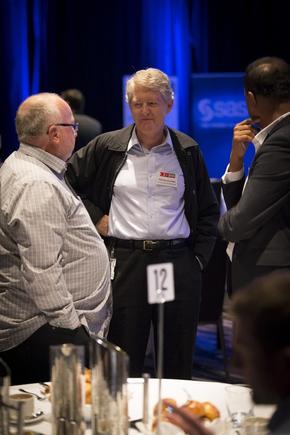Phil Brimacombe: Technologists to business leaders
- 04 November, 2015 07:00

Phil Brimacombe has basic, if direct, advice for CIOs looking for broader executive roles: “The most important thing is to stop thinking of yourself as the IT person and think of yourself as a senior business executive who is contributing across the board, and you just happen to have the IT portfolio.”
The head of corporate services at NorthTec in Whangarei says that if your colleagues see you are contributing to all parts of the business rather than just restricting yourself to IT matters, then they are far more likely to see you as a possible candidate for broader roles.
It is a dictum Brimacombe has certainly applied to his own career.
From a project manager role, Brimacombe has moved to IS and IT manager to CIO, principal consultant and director IT strategy, policy and planning. This pathway cuts across sectors – retail (Progressive Enterprises), finance (HSBC) health (healthAlliance and Counties Manukau District Health Board and Waitemata District Health Board) and education (University of Auckland and NorthTec). He was also a senior consultant with Techspace.
In his current role, he is responsible for leading and managing multidisciplinary teams that provide services to NorthTec, the largest tertiary education provider in the Northland. These include finance, assets and facilities and information technology, so the IT director reports to him.
While he traversed different sectors, he is clear on one thing: “You need to stay with an organisation long enough to demonstrate that you are a success at an organisation.
“I was eight years in retail, eight years in banking and 12 years in public health,” he cites.
He was director of IT strategy, policy and planning at the University of Auckland for three years, when he moved to NorthTec,
“When I am recruiting, I look for a balance, that variety of sectors, and also a track record, that people have stayed in the place and have not flitted on [to another job] after a short period of time.

When I am recruiting, I look for a balance, that variety of sectors, and also a track record, that people have stayed in the place and have not flitted on [to another job] after a short period of time.
“If you put in a solid number of years and you are still in a senior role, then you must be doing something right and delivering what is required.”
He believes CIOs can acquire a raft of skills to be able to work across sectors and higher roles. He says this was proven by Sir Ralph Norris, who moved from CIO to CEO at ASB Bank, and later on to chief executive at Air New Zealand and at ASB’s parent bank Commonwealth Bank in Australia.
He also cites the case of Garth Biggs, who was CIO at Progressive Enterprises and Air New Zealand and then become chief executive of Gen-i (now Spark Digital). Biggs is now a professional director and business consultant.
Brimacombe was an IT director when he completed a master’s in business administration. He believes having this qualification was a big factor when he got his first CIO role.
“The MBA opened my eyes to all the different aspects of business and of organisations. It gave me a broad understanding of how organisations work.”
His MBA was mainly on finance, which helped him when he stepped up to C-level roles.
“As a CIO, I was responsible for multimillion dollar budgets and operational and capital,” he states.
“I worked at a very senior level reporting to the chief executive and being a member of senior management teams. Therefore, I was sitting around the table where strategies and strategic decisions were made and being involved in discussions around running the business right across the board. And of course, having to provide IT services for all parts of the organisation.
“That means you have to have a good understanding of how the organisation works.
“You are not a technician anymore,” he concludes. “That is why being a CIO helps you move on to these broader business roles later on.”

Send news tips and comments to divina_paredes@idg.co.nz
Follow Divina Paredes on Twitter: @divinap
Follow CIO New Zealand on Twitter:@cio_nz
Click here to read the Spring 2015 issue of CIO New Zealand
Sign up for CIO newsletters for regular updates on CIO news, views and events.
Join the CIO New Zealand group on LinkedIn. The group is open to CIOs, IT Directors, COOs, CTOs and senior IT managers.

